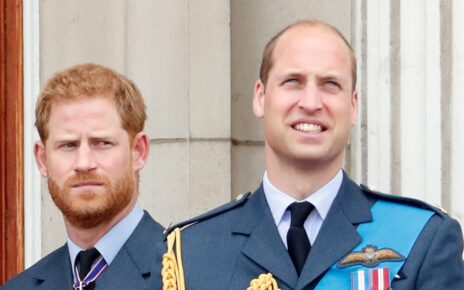Matthew Moczygemba knew something was wrong when he lost his thirst. It was midafternoon on a 103-degree day in Fort Worth, Texas, and the UPS driver had been delivering packages for several hours. Soon he felt dizzy, then he pulled his truck over and vomited onto the curb.
“I stopped sweating and was starting to get cold,” said Moczygemba, 35, who has worked for UPS for five years. “It was a bad feeling.”
Moczygemba wound up at a hospital emergency room, where doctors diagnosed him with dehydration and heat exhaustion, and gave him several bags of IV fluid, according to medical records.
He was released a few hours later, but he has not returned to work in the nearly three weeks since.
“I’m nervous about going back,” Moczygemba said.
With heat waves rolling across the country, and states like Texas and Oklahoma experiencing record hot summers, workers exposed to the elements are increasingly struggling under the heat.
More than a dozen UPS employees and union leaders say this year more workers seem to be getting sick and been hospitalized because of the heat than ever before. In response, they are demanding that the company put more safety measures in place.
“Left and right people are falling out,” said Jeff Schenfeld, a union steward in Dallas and UPS veteran of 25 years. “Something is different this year. It’s a lot more people.”
UPS is the world’s largest package delivery company, and its ubiquitous brown trucks and warehouses are largely without air conditioning. After record earnings last year, the company installed cameras in its delivery trucks, but did not change its heat safety protocols, according to the union, compounding long-held grievances about the company’s priorities.
The majority of UPS workers, some 350,000 people, are covered by the biggest union contract in North America, which expires next year. Heat protections will be one of the key issues in the upcoming negotiations, according to the International Brotherhood of Teamsters, which represents the workers.
“UPS hasn’t been proactive at all on the topic of heat and that’s going to have to change,” said Sean M. O’Brien, general president of the union.
The Teamsters issued a public letter last week outlining a series of steps it says UPS should take immediately to improve the safety of its drivers, given the weather. They include providing fans in every truck (rather than by request), cooling neck towels, consistent supplies of water and ice, and more breathable uniforms, along with hiring more drivers to reduce workload.
“By refusing to implement these safety measures, the company is literally sending drivers out to die in the heat,” said O’Brien.
In a statement, UPS said its drivers are trained to work outdoors and to manage the effects of hot weather and that the company provides regular heat illness and injury prevention training for employees, as well as water and ice, as part of its “cool solutions” program developed with regulators. The company has weekly safety meetings between workers and management and said it promptly addressed issues when they were brought to its attention.
“The health and safety of our employees is our highest priority,” said spokesperson Matt O’Connor. “We never want our employees to continue working to the point that they risk their health or work in an unsafe manner.”
Tensions rising
Heat illness, which in severe cases can lead to locked muscles, kidney failure, and death, has long been a risk for UPS workers in the summer, and a point of contention between the company and its workers, as NBC News has reported. The company’s iconic trucks do not have air conditioning, and some are without fans in the front. The warehouse floors and docks where the company’s loaders work can also get dangerously hot.
The company has previously stated it does not air-condition its fleet of package trucks because frequent stops and the size of the vehicles would render air conditioning “ineffective.” The same goes for large warehouses with loading-dock doors that are usually left open.
How many of its workers are injured by heat in a given year is difficult to know, worker safety experts say. While workplace safety regulators track severe heat-related injuries, those numbers are generally underreported and only include in-patient hospitalizations. Many workers who go to emergency rooms for heat illness, like Moczygemba, are never fully admitted and leave the hospital after a few hours, though they may take weeks to recover and return to work.
Some UPS workers say the back of the trucks, which they must go in and out of to retrieve packages, can feel like saunas. Federal Occupational Safety and Health Administration inspectors have documented heat indexes of 126, and temperature readings taken by workers in their trucks in Arizona and Florida provided to NBC News show temperatures above 150 degrees.
UPS has taken steps to lessen the heat in its trucks. The company says it has
installed venting systems to increase airflow, optimized the roofs for heat reduction and insulation and offers fans to drivers on request.
“This job is physically demanding even without the sun beating down,” said Hector Medina, who has delivered packages for UPS in the Tampa area for more than 20 years. “There’s times you go home and you’re brain dead because of the heat.”
Medina said this summer feels hotter, but the company does not adjust its workload based on high temperatures.
The risks for UPS workers and their fight for more protections from the company are emblematic of what workers everywhere — including others in the delivery industry — face with rising temperatures, said Juley Fulcher, worker health and safety advocate at Public Citizen, a nonprofit organization that pushes for national heat protections.
But UPS is unique, she said, in its size and “extremely detailed procedures” for its workers.
“They’re in a uniquely positive position to actually do something about this, because they are so structured,” she said.
Many of UPS’ main competitors employ large numbers of contractors, and have far less union representation, giving UPS’ thousands of union employees more opportunities to speak out about worker safety issues. This year, tensions between the company and union have been rising amid a steady stream of headlines about UPS drivers collapsing in the heat.
In New York City, the local Teamsters union held a rally Thursday after they say four UPS employees in Long Island and Manhattan went to the emergency room in two days. Local union president Vincent Perrone announced he was taking the unusual step of pulling all union representatives from weekly safety meetings with the company.
“If and when the Company decides to take the safety of our people seriously, I will consider reinstating the committee,” he wrote in a public letter.
Some 1,500 miles away, as Oklahoma was pummeled by several weeks straight of record 100-plus degree days, a group of drivers from one UPS center distributed thermometers in early July to collect temperature readings from the front and back of several dozen trucks. On one 103-degree afternoon, they logged 12 different readings between 110 and 127 degrees, according to an NBC review of their data.
“There are living animals in the back of my package car, and I don’t know that all of those lizards are alive by the time they get to somebody’s house,” said one of the drivers, who requested to remain anonymous out of fear of retaliation.
Heat deaths
Last August, Jorja Rodriguez lost her son, José Cruz Rodriguez, 23, just weeks after he started working for UPS.
On his second day driving a truck after finishing training in Waco, Texas, José Rodriguez texted a supervisor that he was not feeling well. He spoke to his mother around 7:30 pm, telling her his shift was almost over, but he never clocked out. He was found hours later, lying in a concrete culvert by the facility parking lot. He was pronounced dead around 2 a.m.
OSHA later ruled that he had died from a heat-related illness, and issued a $14,502 fine, which UPS is contesting.
“This could have been prevented,” said Rodriguez. “My son could still be here. Maybe he could have ended up at the hospital for a few days for dehydration or something, but other than that, I could still have him.”
She and her husband filed a wrongful death lawsuit against UPS, settling with the company a few months later.
David Michaels, an epidemiologist at George Washington University who ran OSHA under President Obama, said that heat can lead to fatal conditions, including heart attacks, but an autopsy might not make any mention of its effect. “The number of worker heat deaths is severely undercounted,” Michaels said.
With its current regulations, “OSHA’s hands are tied,” said Michaels. “Only in the most extreme situations when workers are killed or badly hurt can OSHA issue a citation because of heat exposure.” The agency’s fines are rarely more than $15,000, and many are ultimately dropped after companies contest them.
OSHA has begun an effort to inspect more often for heat-related dangers and is working on creating heat-specific worker protections, but those will take years.
“With the climate crisis, the summers are getting hotter, and if employers don’t better protect workers, we’re going to see more deaths,” he said. “Certainly UPS knows how to make sure workers are safe and can afford to protect them.”
The issue gained a burst of attention earlier this summer following the death of a young UPS employee.
In June, Esteban “Stevie” Chavez Jr., 24, died after he passed out in his UPS vehicle on a residential street in Pasadena, California, a day after his birthday.
The official cause of Chavez’s death is still unknown. The family is waiting for the autopsy results, but his father, Esteban Chavez Sr., told NBC News, “I strongly believe it was the heat.”
UPS issued a statement after his death, saying that “we are deeply saddened” and “are cooperating with the investigating authorities and are respectfully deferring questions about this incident to them.”
“Maybe if he hadn’t gone to work that day he would still be here,” his step-mother Dominique Chavez said shortly after the funeral.
Source: Read Full Article





